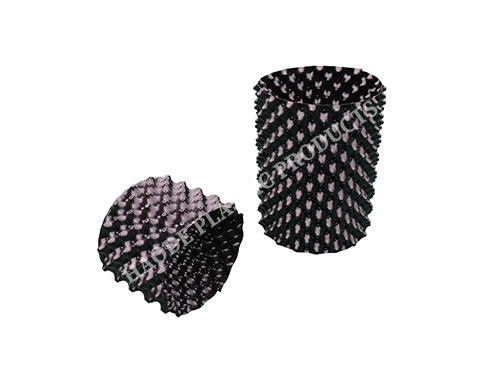Root Controller Usage Guide: How to Make Plant Roots Stronger
2024-06-20 08:46:55
Outline
I. What is a Root Controller?
II. Why Use a Root Controller?
III. How to Use a Root Controller?
IV. Precautions for Using Root Controllers
V. Conclusion

In horticulture and agriculture, healthy roots are the key to ensuring the vigorous growth of plants. As an innovative planting tool, the root controller can effectively promote the development of plant roots, making them stronger and healthier. This article will detail the usage guide of the root controller to help you fully utilize its advantages and create a more beautiful and productive garden.
I. What is a Root Controller?
A root controller is a specially designed planting container, usually made of breathable materials such as non-woven fabric or plastic mesh. Its unique structure can control the growth direction of the roots, prevent root entanglement, and promote root branching, making the roots healthier and more developed.
II. Why Use a Root Controller?
1. Prevent root entanglement: Traditional flower pots can cause root entanglement, affecting the plant's absorption of water and nutrients. The root controller guides the roots to grow outward through its design, avoiding the problem of entanglement.
2. Promote root branching: The breathable material of the root controller promotes root branching, forming more capillary roots and enhancing the plant's absorption capacity.
3. Improve transplant survival rate: Plants cultivated using root controllers have developed roots that are less likely to be damaged and have a higher transplant survival rate.
4. Improve soil drainage: The root controller maintains good soil drainage to prevent root rot due to water accumulation.
III. How to Use a Root Controller?
1. Choose the appropriate root controller
Based on the plant species and growth requirements, select the suitable root controller. Different sizes and materials of root controllers are suitable for different types of plants, such as small flowers, large shrubs or fruit trees. Ensure that the breathability and drainage of the root controller meet the plant's needs.
2. Fill with suitable substrate
Fill the root controller with a substrate suitable for plant growth. It is recommended to use a substrate with good breathability and strong drainage, such as a mixture of peat soil, perlite and coconut coir. These substrates can provide sufficient oxygen and water while preventing water accumulation.
3. Plant and water
After planting the plant in the root controller, the initial watering should be sufficient to ensure that the roots can quickly adapt to the new environment. Afterwards, control the amount of watering to keep the substrate moist but not overly waterlogged. Regularly check the humidity of the substrate and adjust the watering frequency as appropriate.
4. Fertilize regularly
Plants grown using root controllers have a high demand for nutrients due to their developed roots. It is recommended to use slow-release fertilizers or organic fertilizers to ensure that the plants can continuously obtain the necessary nutrients. Regular fertilization, especially during the growing season, can promote rapid plant growth.
5. Regularly inspect and prune
Regularly inspect the growth of the plant roots. If the roots are found to be overly dense or have diseases, prune and treat them in time. Pruning the roots can promote the growth of new healthy roots and improve the plant's absorption capacity.
IV. Precautions for Using Root Controllers
1. Avoid excessive watering: Although the root controller has good drainage, excessive watering can still cause water accumulation and affect root health. Maintain moderate watering and avoid waterlogging.
2. Choose a suitable environment: According to the plant's needs, select the appropriate light and temperature environment. The root controller is suitable for various planting environments, but adjustments need to be made based on specific circumstances.
3. Prevent pests and diseases: Regularly inspect the plants to prevent pests and diseases. Timely treatment of diseases can effectively protect the plant's health.
V. Conclusion
As an innovative horticultural tool, the root controller significantly improves the health of plant roots and overall growth effect by preventing root entanglement, promoting root branching, improving transplant survival rate and improving soil drainage. By choosing the appropriate root controller, filling with the suitable substrate, scientifically watering and fertilizing, and regularly inspecting and pruning, you can make the plant roots stronger and create a more lush and beautiful garden.
Start using the root controller and let your plants radiate unprecedented vitality and experience the miracle of healthy plant growth! Contact us for more information.

The CNC Seed Braiding Machine is a high-precision, fully automated agricultural equipment s...

It adopts electrical integration and can be started by pressing the fully automatic button ...

The XP750 seeder has stable performance, excellent product quality, simple and convenient o...

It adopts electrical integration and can be started by pressing the fully automatic button ...



